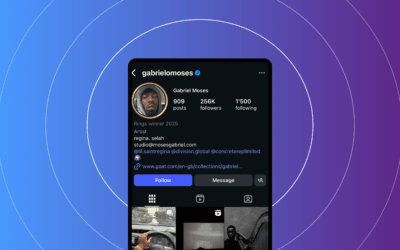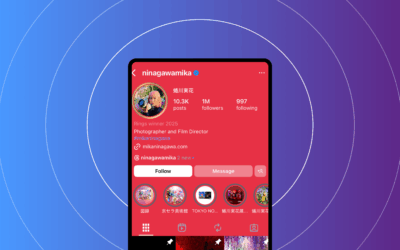Influencer Video Marketing
Influencer video marketing is the fastest way to earn trust, educate users, and speed up SaaS adoption. In 2025, short-form video dominates attention, and platform-native shopping helps creators convert viewers into customers. This guide gives you a precise definition, platform-by-platform tactics, an 8-step repeatable framework, and a compact checklist you can paste into your plan. Influencer video marketing works best when it’s compliant, measurable, and scalable across channels.
What is influencer video marketing and why it matters
Influencer video marketing is paid, sponsored, or organic creator-produced video content distributed on social platforms to reach a creator’s audience and drive awareness, consideration, or conversions for a brand. It includes unboxings, tutorials, demos, testimonials, and creator-led case studies. Video combines sight, sound, and motion to show how a product works, address objections, and deliver social proof in one package. This makes it ideal for SaaS and complex products where a demonstration helps understanding.
In 2025, video matters because it keeps attention longer, is easier to share, and often converts better than static content. Marketing research shows video delivers strong ROI and higher understanding and purchase intent versus other formats, making creator-led video a top investment area for brands. Source: Wyzowl State of Video Marketing.
For platform-native shopping and creator tools, video is the anchor. Short-form formats dominate discovery, while long-form content deepens education and intent. Platform features like shoppable links and creator tagging smooth collaboration between brands and creators. Sources: Statista influencer & video stats, Wyzowl State of Video Marketing.
Ways to use formats across funnel stages:
- Unboxing for broad awareness
- Tutorials and demos for consideration
- Testimonials for trust
- Creator case studies for consideration and conversion
Quick formats to try:
– Unboxing (30–45 seconds)
– Tutorial (60–120 seconds; longer on YouTube)
– Product demo (45–90 seconds; 6–12 minutes on YouTube)
– Testimonial (30–90 seconds)
– Short tip or hack (15–30 seconds)
Visual cue: A small graphic mapping video formats to marketing goals can help teams plan quickly.
Expert note: “Short-form discovery fuels reach, while long-form content fuels depth.” This balance is essential in 2025. Source: industry observations and trend analyses.
Compact platform comparison
|
Platform |
Strengths |
Ideal length |
Best for |
|
TikTok |
Discovery, trends, fast feedback |
15–60 seconds |
Awareness, quick tips, UGC vibes |
|
Reels (Instagram) |
Discovery + shopping visuals |
15–60 seconds |
Awareness, product showcases |
|
YouTube |
Depth, search, evergreen viewing |
Shorts: 15–60s; Long: 5–12+ min |
Consideration, demos, SEO |
Platform strengths
TikTok and Instagram Reels shine for discovery and short-form virality. They’re ideal for top-of-funnel awareness and quick tips. YouTube supports deeper education with long-form demos, while Shorts extend reach. Instagram’s branded content tools simplify disclosure and enable shoppable storytelling across Reels, Feed, and Stories.
- TikTok: Creative best practices and commercial features for brands and creators. Source: TikTok for Business.
- YouTube: Long-form demos and explainers plus Shorts for reach.
- Instagram: Branded content tools and shoppable features. Source: Instagram branded content tools.
If you’re evaluating platforms, see our Influencer Marketing Platform guide for a quick overview. Internal link: Platform overview and selection.
Key components of influencer video marketing campaigns
Creator discovery & vetting
Great influencer video marketing starts with fit. Vet creators on audience overlap, engagement quality, past performance on similar content, and brand safety. Always check for fraud indicators and ensure you can measure outcomes with clear KPIs. Source: Influencer Marketing Hub Benchmark Report. Source: Influencer Marketing Hub Benchmark Report.
Internal link suggestion: See our Step-by-step brief walkthrough with examples for crafting creator briefs.
Brief design & messaging guidelines
Clarity beats control. Your brief should include the campaign objective, target audience, 3 key messages, and clear CTAs with tracking. Include mandatory visuals and disclosure language. A concise brief helps creators stay on-brand and compliant.
“This brief supports how to create video influencer marketing content that drives trial sign-ups.”
Creative formats to consider
- Tutorial: mid-funnel. 60–120 seconds short; 6–10 minutes on YouTube.
- Demo: 45–90 seconds; 5–8 minutes deep dive.
- Testimonial: 30–90 seconds; mix face cam with overlays.
- Unboxing/first impressions: 30–45 seconds.
- Quick tips: 15–30 seconds.
- Long-form walkthrough: 8–12+ minutes with chapters.
Repurposing content can keep production costs down. Always adapt aspect ratios and captions for each platform. External guidance on captions: YouTube caption guidance.
Compliance & disclosure requirements
Disclosures must be clear and conspicuous. Include on-screen disclosures in the first 3 seconds and in captions, plus platform tags when available. Review FTC guidelines for wording and placement.
Source: FTC influencer marketing guidelines.
Compensation models & incentives
- Flat fee per deliverable.
- Performance-based (CPC/CPA) or hybrid.
- Product-only for micro-creators (used strategically).
- Affiliate codes and revenue share for ongoing series.
Sample clauses include payment milestones, license scope, and exclusivity terms. Always include FTC compliance in contract clauses.
Cross-platform adaptation & repurposing
Repurpose without losing native feel:
- Convert aspect ratios (9:16, 1:1, 16:9).
- Captions and transcripts are mandatory for accessibility.
- Thumbnails should be high-contrast with a human face and 3–5 words.
- Test CTA variants like “Learn more” vs “Start free trial.”
Visual cue: Repurposing checklist graphic.
How to create video influencer marketing: a practical framework
The fastest way to operationalize influencer video marketing is to use a repeatable eight-step framework you can run each quarter and scale.
Step 1 — Define objectives & success metrics
Pick one objective: awareness, consideration, acquisition, or retention. Set numeric targets and map KPIs.
- Awareness → Primary KPI: impressions or views; Secondary: VTR, reach
- Consideration → Primary: AVT or VTR; Secondary: engagement, clicks
- Acquisition → Primary: conversions or trial sign-ups; Secondary: CTR, CPA
- Retention/Expansion → Primary: product usage or upsell sign-ups; Secondary: sentiment
Benchmark ranges vary; start with industry references. Source: Influencer Marketing Hub Benchmark Report URL: https://influencermarketinghub.com/influencer-marketing-benchmark-report/
Step 2 — Identify & vet creators
- Audience demo match to ICP
- Engagement rate = (likes + comments + shares) ÷ followers
- Comment quality review
- Content consistency
- Platform history and niche authority
- Brand safety scan
- Fraud screening
- Average watch time
- Creative sample review
- Reference check with past brands
Discovery sources: niche searches, referrals, curated marketplaces with filters. Source: Influencer Marketing Hub Benchmark Report URL: https://influencermarketinghub.com/influencer-marketing-benchmark-report/
Step 3 — Craft the brief & creative formats
Brief template (paste-ready): Title, Objective, Target persona, 3 key messages, CTA, Script starter, Deliverables, Rights. Script starters include lines like: “In under two minutes, I’ll show you how I solve X with Y.”
Script starters and examples help keep content aligned with the brief. For more on briefs, see our internal Creator Brief guide. Internal link: Step-by-step brief walkthrough with examples here.
Step 4 — Compliance & disclosure (specific actions)
Place disclosures in the first 3 seconds on-screen and in the caption. Use platform tags where available. Include spoken disclosure in long-form content.
Source: FTC guidelines.
Step 5 — Production & optimization
Production checklist: lighting, audio, framing, visuals, brand kit, accessibility, thumbnail, hook. Include captions and transcripts.
Caption guidance source: YouTube caption guidance.
Step 6 — Launch plan & cross-promotion
Four-week launch calendar:
– Week 1: Creator posts; brand reposts; respond to comments within 24 hours.
– Week 2: Boost top performers; open whitelisting.
– Week 3: Derivative cuts on other platforms; retargeting.
– Week 4: Round-up post; email embed; add to product pages.
UTM structure example: utm_source=creatorname&utm_medium=influencer&utm_campaign=product_launch_q1
Step 7 — Measurement & optimization
Tracking setup includes UTMs, unique promo codes, affiliates, view-through pixels, and holdout groups. Weekly KPI dashboards should show impressions, views, AVT, VTR, CTR, conversions, CPA, ROAS, and sentiment. For platform attribution, see Meta/Facebook Help and other official docs. Source: Meta Business Help URL: https://www.facebook.com/business/help/
Step 8 — Governance & relationship management
Contract essentials: deliverables with dates, two revisions, payment milestones, license scope, exclusivity, and FTC compliance. Relationship rhythm: pre-brief call, draft review, post-campaign retro, monthly check-ins for recurring creators.
How to create video influencer marketing: compact checklist
Use this quick-start list to remember the essentials:
- Set one objective and 2–3 KPIs tied to business outcomes.
- Find 3–5 creators who match your ICP; verify engagement quality.
- Send a one-page brief with 3 key messages and exact CTAs.
- Require captions, transcripts, and clear disclosure in the first 3 seconds.
- Launch with trackable UTMs and unique codes per creator.
- Run a 2-week boosted window; retarget viewers with product CTAs.
- Report weekly on views, AVT, CTR, conversions, CPA, and ROAS.
- Repurpose top cuts across platforms; scale winners for Q2.
Tools, templates & reusable assets
Make influencer video marketing repeatable with these paste-ready assets:
- Creator brief template (Step 3)
- Influencer scoring rubric (fit, engagement, watch time, content quality, brand safety, cost)
- KPI dashboard mock-up (with formulas for engagement rate and CPA)
- Tracking & UTM cheat sheet: utm_source, utm_medium, utm_campaign; add content/term for variants
- Discovery/analytics resources: benchmarks and marketplaces
Measuring impact and ROI of influencer video marketing
Executives fund what they can measure. Build a simple, rigorous stack that blends direct-response metrics with brand lift.
Quantitative metrics
Impressions, views, AVT, VTR, CTR, conversions, CPA, and ROAS are essential. These show how fast and efficiently your content drives action.
Qualitative signals
Comment quality and sentiment analysis help confirm audience reception. Brand-lift studies quantify shifts in awareness or intent. Source: Nielsen brand lift URL: https://www.nielsen.com/us/en/solutions/measurement/brand-lift/
Attribution approaches
Last-touch is easy but misses view-through impact. Multi-touch modeling allocates credit across touchpoints. View-through credits viewers exposed to the video who later convert. Use holdout tests to estimate incremental lift. Source: Facebook/Meta attribution guidance URL: https://www.facebook.com/business/help/
Case studies and real-world examples
SaaS Brand A (B2B): Creator-led tutorial series boosts trials
Objective: Drive free trials among data analysts. Format: Three 60–90 second tutorials on Reels and TikTok; one 8-minute YouTube walkthrough. Structure: 3 creators, staggered release, 2-week boost, retargeting. Primary KPIs: AVT, CTR, trial sign-ups. Results: Tutorial Reels delivered strong AVT and CTR; overall trial sign-ups rose meaningfully. CPA declined compared to prior static campaigns. Takeaways: Lean into problem-led hooks; pair short-form with a longer YouTube demo. Reference: TikTok business success stories URL: https://www.tiktok.com/business/en/success-stories
Internal link: See our Creator Brief guide for crafting briefs that align with outcomes. Link: Influencer media kit guide URL: https://clickanalytic.com/influencer-media-kit-guide
Fintech App B (Consumer): Unboxing + testimonial builds trust
Objective: Increase new account sign-ups. Format: 30–45 second unboxing of the app’s card, then 60-second testimonial. Structure: 5 micro-creators; affiliate codes; platform-native captions. Primary KPIs: VTR, sign-ups via code, CPA. Results: High CPA efficiency from top performer; affiliate codes helped prove incremental sign-ups. Takeaways: Micro-creators with tight trust networks can outperform big names; pair unboxing with clear CTAs. Source: YouTube ads case studies.
Developer Tool C (SaaS): Long-form demos drive sales pipeline
Objective: Generate MQLs and demo requests. Format: 10-minute YouTube demo with chapters + Shorts teaser. Structure: One expert creator with domain authority; paid amplification to niche audiences. Primary KPIs: AVT, click-to-demo rate, MQLs. Results: Uplift in demo form fills; strong average view time. Takeaways: Chapters help skim; a Shorts teaser can route high-intent viewers to deep content.
Common pitfalls and best practices
- Pitfall: Misaligned creator fit. Fix: Run a micro-test first; watch comment quality, not just likes.
- Pitfall: Vanity metrics alone. Fix: Tie metrics to business outcomes like trials and demos.
- Pitfall: Poor disclosure/compliance. Fix: Include disclosure clauses; verify platform rules quarterly. FTC guidelines
- Pitfall: Low production quality. Fix: Use a production checklist for lighting, audio, captions, and accessibility.
- Pitfall: No repurposing. Fix: Create a repurposing schedule with platform-specific hooks and thumbnails.
FAQ
Q1: What is influencer video marketing and how is it different from standard influencer marketing?
A: Influencer video marketing is creator-produced video content—sponsored or organic—distributed on platforms to drive awareness, consideration, or conversions. It differs by using sight, sound, and motion for demos and tutorials, which often outperform static posts for education and intent. Sources: Wyzowl, Statista Wyzowl: State of Video Marketing Statista: Influencer & video stats
Q2: How do you measure ROI for influencer video campaigns?
Combine direct-response metrics (CTR, conversions, CPA, ROAS) with brand-lift or incrementality tests. Use view-through and holdout groups to capture impact beyond last-click. See platform attribution docs for setup. Sources: Nielsen Brand Lift URL: https://www.nielsen.com/us/en/solutions/measurement/brand-lift/, Facebook/Meta Help URL: https://www.facebook.com/business/help/
Q3: What metrics matter most for B2B SaaS influencer video campaigns?
Prioritize trial sign-ups, demo requests, and MQLs first. Support with AVT, VTR, CTR, and CPA. Use benchmarks to refine targets. Source: Influencer Marketing Hub Benchmark Report URL: https://influencermarketinghub.com/influencer-marketing-benchmark-report/
Q4: How should we select influencers for video campaigns?
Use a six-point checklist: audience fit, engagement quality, content quality, watch time, brand safety, and cost efficiency. Validate with a pilot. See benchmark resources for insights. Source: Influencer Marketing Hub Benchmark Report URL: https://influencermarketinghub.com/influencer-marketing-benchmark-report/
Q5: What are best practices for disclosure and compliance?
Disclosures should be clear and upfront: on-screen in the first seconds, in captions, and via platform tools like Paid Partnership. Use plain terms like “Ad” or “Sponsored.” Source: FTC guidelines URL: https://www.ftc.gov/tips-advice/business-center/advertising-and-marketing/influencer-marketing
Q6: How long should influencer videos be for maximum engagement?
Short-form videos are 15–60 seconds for discovery; longer Demos are 5–12+ minutes on YouTube, ideally with chapters. Sources: Statista, Wyzowl Statista: Influencer & video stats Wyzowl: State of Video Marketing
Q7: How can we repurpose influencer videos across platforms?
Convert aspect ratios, add captions, refresh hooks and thumbnails, and tailor CTAs per channel. Always keep the core story but fit native formats. YouTube caption guidance URL: https://support.google.com/youtube/answer/2734796
Q8: What are the most common People Also Ask questions about influencer video marketing?
Common questions cover definitions, ROI, ideal video lengths, influencer selection, disclosure rules, and how to implement step-by-step. The guide’s sections on definition, framework, and checklists provide concise answers.
Conclusion: Influencer Video Marketing Roadmap for 2025
Influencer video marketing offers a scalable way to blend trusted voices with the teaching power of video. By using a clear objective, a vetted creator set, and a repeatable framework, you can drive awareness, consideration, and conversions.
Your next steps:
- Test a focused hypothesis with one objective, three creators, and clear KPIs.
- Use the brief, scoring rubric, dashboard, and UTM cheat sheet to speed execution.
- Track incrementally with UTMs, codes, and a holdout to prove value and justify future budgets.
Sources & further reading
- Wyzowl — State of Video Marketing (accessed September 2025): https://www.wyzowl.com/state-of-video-marketing/
- Influencer Marketing Hub — Benchmark Report (accessed September 2025): https://influencermarketinghub.com/influencer-marketing-benchmark-report/
- Statista — Influencer & video stats (accessed September 2025): https://www.statista.com/topics/6677/influencer-marketing/
- FTC — Influencer marketing guidelines (accessed September 2025): https://www.ftc.gov/tips-advice/business-center/advertising-and-marketing/influencer-marketing
- TikTok for Business (accessed September 2025): https://www.tiktok.com/business/en
- Instagram — Branded content tools (accessed September 2025): https://about.instagram.com/blog/announcements/introducing-branded-content-tools
- YouTube — Caption guidance (accessed September 2025): https://support.google.com/youtube/answer/2734796
- Nielsen — Brand lift testing (accessed September 2025): https://www.nielsen.com/us/en/solutions/measurement/brand-lift/
- Facebook/Meta — Business Help (accessed September 2025): https://www.facebook.com/business/help/
Influencer Marketing Articles
Actionable tips to get more success with influencer marketing campaigns
Who is Gabriel Moses?
Discover Gabriel Moses, the London-born artist blending fashion, music, and heritage into striking visual narratives. From Dior to Johnnie Walker, see why he’s shaping culture.
Who is Mika Ninagawa?
Discover Mika Ninagawa, Tokyo’s visionary photographer and film director celebrated for her vivid art, bold storytelling, and win at Instagram Rings 2025.
Influencer Price List: What Brands Pay in 2025 & 2026
An influencer price list is the working set of fees and terms creators (or their agents) provide — the baseline for budgeting, negotiating, and forecasting influencer campaigns.






